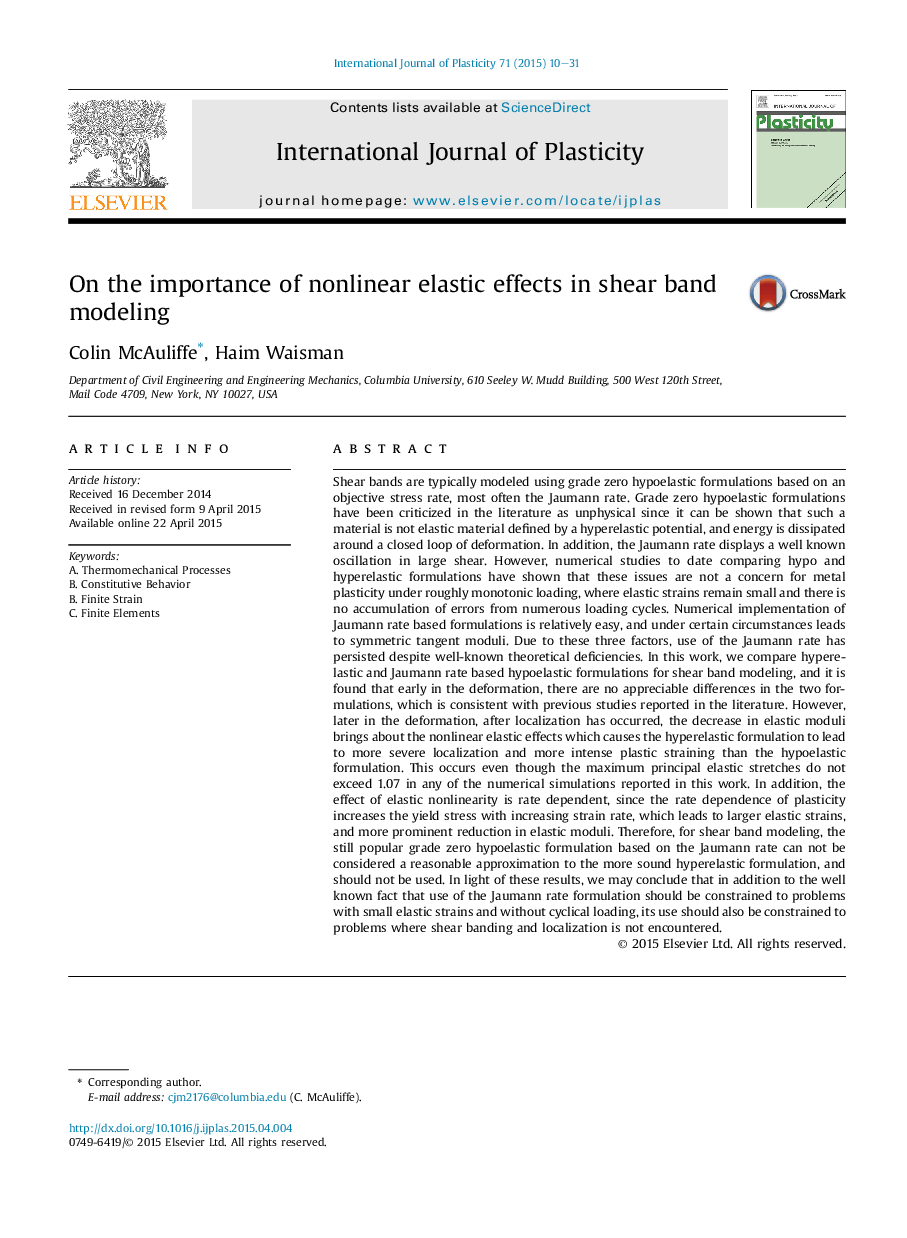| کد مقاله | کد نشریه | سال انتشار | مقاله انگلیسی | نسخه تمام متن |
|---|---|---|---|---|
| 786087 | 1465602 | 2015 | 22 صفحه PDF | دانلود رایگان |
• Hyper and hypoelastic formulations for shear band modeling are developed and compared.
• Negligible differences are found in the models pre localization, which is consistent with previous work.
• Significant differences in the models are found in the post localization regime, where the two models have not been compared previously.
• These differences are shown to be of interest for predictions of the ductile brittle failure transition.
Shear bands are typically modeled using grade zero hypoelastic formulations based on an objective stress rate, most often the Jaumann rate. Grade zero hypoelastic formulations have been criticized in the literature as unphysical since it can be shown that such a material is not elastic material defined by a hyperelastic potential, and energy is dissipated around a closed loop of deformation. In addition, the Jaumann rate displays a well known oscillation in large shear. However, numerical studies to date comparing hypo and hyperelastic formulations have shown that these issues are not a concern for metal plasticity under roughly monotonic loading, where elastic strains remain small and there is no accumulation of errors from numerous loading cycles. Numerical implementation of Jaumann rate based formulations is relatively easy, and under certain circumstances leads to symmetric tangent moduli. Due to these three factors, use of the Jaumann rate has persisted despite well-known theoretical deficiencies. In this work, we compare hyperelastic and Jaumann rate based hypoelastic formulations for shear band modeling, and it is found that early in the deformation, there are no appreciable differences in the two formulations, which is consistent with previous studies reported in the literature. However, later in the deformation, after localization has occurred, the decrease in elastic moduli brings about the nonlinear elastic effects which causes the hyperelastic formulation to lead to more severe localization and more intense plastic straining than the hypoelastic formulation. This occurs even though the maximum principal elastic stretches do not exceed 1.07 in any of the numerical simulations reported in this work. In addition, the effect of elastic nonlinearity is rate dependent, since the rate dependence of plasticity increases the yield stress with increasing strain rate, which leads to larger elastic strains, and more prominent reduction in elastic moduli. Therefore, for shear band modeling, the still popular grade zero hypoelastic formulation based on the Jaumann rate can not be considered a reasonable approximation to the more sound hyperelastic formulation, and should not be used. In light of these results, we may conclude that in addition to the well known fact that use of the Jaumann rate formulation should be constrained to problems with small elastic strains and without cyclical loading, its use should also be constrained to problems where shear banding and localization is not encountered.
Journal: International Journal of Plasticity - Volume 71, August 2015, Pages 10–31
